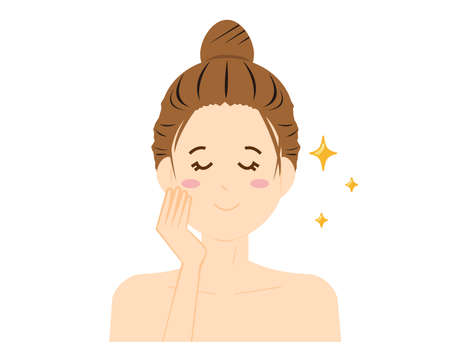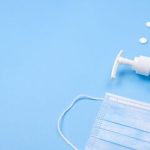1. Introduction to DIY Face Masks for Acne-Prone Skin
Dealing with acne-prone skin can be frustrating, but using natural ingredients in homemade face masks may help soothe irritation and reduce breakouts. DIY face masks are an affordable and effective way to nourish your skin without harsh chemicals.
Why Choose DIY Face Masks?
Homemade face masks allow you to control the ingredients, ensuring they are free from harmful additives. Natural ingredients like honey, aloe vera, and turmeric have antibacterial and anti-inflammatory properties that can help calm acne-prone skin.
Benefits of Natural Ingredients for Acne
| Ingredient | Benefit for Acne-Prone Skin |
|---|---|
| Honey | Has antibacterial properties that help fight acne-causing bacteria. |
| Aloe Vera | Soothes inflammation and reduces redness. |
| Turmeric | Packed with antioxidants and has anti-inflammatory effects. |
| Oatmeal | Gently exfoliates and absorbs excess oil. |
| Lemon Juice | Naturally astringent and helps unclog pores. |
Things to Consider Before Applying a DIY Face Mask
- Patch Test First: Always test a small amount on your wrist or jawline to check for allergic reactions.
- Avoid Harsh Ingredients: Some natural ingredients, like lemon juice, can be too strong for sensitive skin.
- Mild and Gentle Application: Avoid scrubbing too hard when applying or removing the mask to prevent irritation.
- Sunscreen is Essential: Some ingredients, like citrus extracts, can make your skin more sensitive to sunlight.
2. Key Ingredients That Help Combat Acne
When it comes to DIY face masks for acne-prone skin, using the right ingredients is essential. Certain natural ingredients have powerful antibacterial, anti-inflammatory, and oil-controlling properties that can help soothe breakouts and promote clearer skin. Let’s take a closer look at some of the best natural ingredients for fighting acne.
Honey: Nature’s Antibacterial Powerhouse
Honey is a well-known natural remedy for acne due to its antibacterial and anti-inflammatory properties. It helps reduce redness, soothes irritated skin, and prevents bacterial growth that leads to breakouts.
Benefits of Honey:
- Kills acne-causing bacteria
- Moisturizes without clogging pores
- Reduces inflammation and redness
Turmeric: A Natural Anti-Inflammatory Agent
Turmeric contains curcumin, which has strong anti-inflammatory and antimicrobial properties. This ingredient helps calm inflamed skin, reduces acne scars, and prevents future breakouts.
Benefits of Turmeric:
- Reduces inflammation and swelling
- Battles bacteria that cause acne
- Evens out skin tone and brightens complexion
Tea Tree Oil: A Potent Acne Fighter
Tea tree oil is a popular natural remedy for acne because of its powerful antibacterial and antifungal properties. It effectively reduces excess oil while targeting acne-causing bacteria.
Benefits of Tea Tree Oil:
- Kills bacteria responsible for breakouts
- Controls excess oil production
- Diminishes the appearance of pimples and blemishes
Clay: The Ultimate Oil Absorber
Certain types of clay, such as bentonite and kaolin clay, are excellent for drawing out impurities from the skin. They absorb excess oil, unclog pores, and help prevent new acne from forming.
Types of Clay and Their Benefits:
| Type of Clay | Main Benefit | Best for Skin Type |
|---|---|---|
| Bentonite Clay | Absorbs oil & detoxifies skin | Oily & acne-prone skin |
| Kaolin Clay | Mild exfoliation & oil control | Sensitive & combination skin |
| French Green Clay | Tightens pores & reduces redness | Aging & acne-prone skin |
Selecting the right ingredients for your DIY face mask can make a big difference in managing acne-prone skin. By incorporating these powerful natural elements into your skincare routine, you can enjoy clearer, healthier-looking skin without harsh chemicals.

3. Top DIY Face Mask Recipes
Creating your own face masks at home is an affordable and effective way to tackle acne while using natural ingredients. Below, weve gathered some of the best DIY face mask recipes that help soothe breakouts, reduce inflammation, and promote clearer skin.
1. Honey & Cinnamon Mask
This mask has antibacterial properties that can help fight acne-causing bacteria while reducing redness and swelling.
Ingredients:
- 1 tbsp raw honey
- ½ tsp cinnamon powder
Instructions:
- Mix honey and cinnamon in a small bowl until you get a smooth paste.
- Apply a thin layer to your face, avoiding the eye area.
- Leave it on for 10-15 minutes.
- Rinse with warm water and pat dry.
2. Turmeric & Yogurt Mask
This mask helps brighten the skin while reducing acne scars and inflammation.
Ingredients:
- 1 tbsp plain yogurt
- ½ tsp turmeric powder
- ½ tsp honey (optional)
Instructions:
- Combine all ingredients in a bowl and mix well.
- Apply an even layer to your face.
- Let it sit for 10-15 minutes.
- Rinse off with lukewarm water.
3. Oatmeal & Aloe Vera Mask
A soothing mask that calms irritated skin and hydrates without clogging pores.
Ingredients:
- 2 tbsp ground oatmeal
- 1 tbsp aloe vera gel
- A few drops of water (if needed)
Instructions:
- Mix the oatmeal and aloe vera gel until you get a spreadable consistency.
- If too thick, add a few drops of water.
- Smooth onto your face and let it sit for 15 minutes.
- Rinse off with cool water.
Nutrient Comparison Table
The table below summarizes the key benefits of each DIY face mask:
| Face Mask | Main Benefits | Main Ingredients |
|---|---|---|
| Honey & Cinnamon Mask | Kills bacteria, reduces inflammation | Honey, Cinnamon Powder |
| Turmeric & Yogurt Mask | Evens skin tone, reduces acne scars | Tumeric Powder, Yogurt, Honey (Optional) |
| Oatmeal & Aloe Vera Mask | Soothe irritation, hydrates skin | Aloe Vera Gel, Ground Oatmeal |
You can try these simple recipes using ingredients that are likely already in your kitchen! Experiment to find the one that works best for your skin type and enjoy a natural approach to clearer skin.
4. How to Use DIY Face Masks Effectively
Using a DIY face mask the right way can make a huge difference in how well it works for your acne-prone skin. Follow these best practices to maximize the benefits of your homemade treatments.
Best Practices for Applying Face Masks
- Start with a Clean Face: Wash your face with a gentle cleanser to remove dirt, oil, and makeup before applying your mask.
- Use Fresh Ingredients: Always prepare your DIY masks with fresh, high-quality ingredients to ensure effectiveness.
- Apply Evenly: Use clean fingers or a soft brush to spread the mask evenly across your face, avoiding the eye area.
- Leave It On for the Right Time: Most masks should be left on for 10-20 minutes. Overusing them can lead to dryness or irritation.
- Rinse with Lukewarm Water: Avoid hot water, which can strip natural oils from your skin. Instead, use lukewarm water to gently rinse off the mask.
- Follow Up with Moisturizer: After rinsing, apply a lightweight, non-comedogenic moisturizer to keep your skin hydrated.
How Often Should You Use DIY Face Masks?
The frequency of using DIY masks depends on your skin type and the ingredients used. Heres a general guideline:
| Mask Type | Recommended Frequency |
|---|---|
| Clay-based masks (for oily/acne-prone skin) | 2-3 times per week |
| Honey-based masks (for soothing and hydration) | 2-4 times per week |
| Aloe vera masks (for calming irritation) | 3-5 times per week |
| Lemon or apple cider vinegar masks (for brightening) | No more than once per week |
Additional Skincare Tips for Better Results
- Avoid Overuse: Using masks too often can disrupt your skin’s natural balance and cause irritation.
- Patching Testing First: If you’re trying a new ingredient, do a patch test on a small area of your skin to check for any allergic reactions.
- Stay Consistent: Regular use is key to seeing long-term benefits, so stick to a schedule that works for you.
- Eats Healthy & Stay Hydrated: Your skincare routine should be complemented by a balanced diet and plenty of water intake.
- Avoid Touching Your Face: Keep bacteria away from your skin by minimizing unnecessary contact throughout the day.
If you follow these steps, youll get the most out of your DIY face masks while keeping acne breakouts under control!
5. Safety Tips and Precautions
DIY face masks can be a great way to care for acne-prone skin, but its essential to use them safely. Natural ingredients can still cause irritation or allergic reactions, so taking precautions is key. Here’s what you need to know to keep your skin happy and healthy.
Potential Risks of Using DIY Face Masks
While DIY masks are made from natural ingredients, they aren’t always risk-free. Some common risks include:
- Skin Irritation: Ingredients like lemon juice, cinnamon, or baking soda can be too harsh and may lead to redness or burning sensations.
- Clogged Pores: Heavy oils or dairy-based ingredients might clog pores and worsen breakouts instead of helping.
- Infections: If tools or hands aren’t clean while applying the mask, bacteria can spread and trigger more acne.
How to Spot Allergic Reactions
If youre trying a new ingredient in your DIY mask, always watch for signs of an allergic reaction. Some symptoms include:
| Reaction Type | Symptoms |
|---|---|
| Mild Irritation | Slight redness, tingling, or dryness |
| Allergic Reaction | Itching, swelling, or rash |
| Severe Reaction | Hives, difficulty breathing (seek medical help immediately) |
If you experience any discomfort beyond mild tingling, rinse off the mask immediately with cool water and apply a gentle moisturizer.
Tips for a Skin-Friendly Experience
Patch Test First
Before applying a new mask to your face, do a patch test on your inner wrist or behind your ear. Wait at least 24 hours to see if there’s any reaction before using it on your face.
Avoid Harsh Ingredients
Citrus fruits, strong spices like cinnamon, and undiluted essential oils can be irritating. Stick to gentle ingredients like honey, oatmeal, and yogurt if you have sensitive skin.
Use Fresh Ingredients
Avoid using old or expired ingredients in your masks. Fresh ingredients ensure better effectiveness and reduce the risk of bacteria growth.
Don’t Overdo It
Aim to use DIY masks only 2-3 times a week. Overusing certain ingredients can strip your skin of its natural oils and cause excessive dryness or irritation.
Follow Up with Moisturizer
No matter how soothing your mask is, always follow up with a lightweight moisturizer suitable for acne-prone skin to keep your skin balanced and hydrated.


